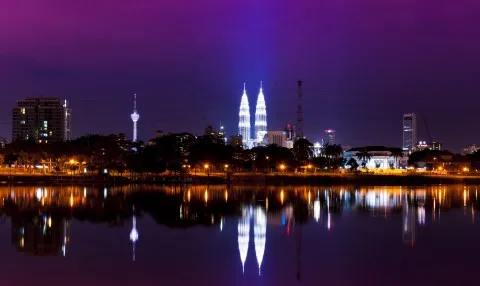
Malaysia's non-hydro renewables capacity to hit 3.4GW by 2026
This is a big jump from 2016's almost 1.4GW.
Accordong to BMI Research, the oversubscription of Malaysia's solar auction supports its view that the country's renewables sector is one of the most attractive in the ASEAN region for investment. The continuation of auctions in the country and the successful commissioning of the projects contracted present a sizeable upside risk to the firm's forecasts.
We have previously highlighted in our analysis that Malaysia will emerge as an outperformer in the Asian renewables industry, in terms of the market's
attractiveness for investment.
Here's more from BMI Research:
This view is underpinned by the country's supportive regulatory environment for renewables and the stable economic and political environment, which translates into an attractive destination for renewables investment.
The outperformance of Malaysia's renewables sector is summarised by our Renewables Risk/Reward Index (RRI), which aims to assess and capture the
different elements that impact the overall investment attractiveness of a country's renewables sector. Malaysia outperforms the Asia average RRI score - and in fact the Global average, on account of its strong performance across the four key components of our index.Recent developments within the Malaysian solar sector attests to this view, as it was announced in August that the country's second competitive bidding
round for large scale solar photovoltaic (PV) projects was significantly oversubscribed.The Energy Commission launched the second auction in February with a target aggregate capacity of 460MW; however, it received over 1.6GW of submissions. The Energy Commission will now shortlist bidders and the projects are expected to be completed in 2019-2020, with the output sold to Tenaga Nasional or Sabah Electricity under a power purchase agreement (PPA).
We forecast non-hydro renewables capacity to total 3.4GW by the end of our 10-year forecast period in 2026, up from just under 1.4GW in 2016. While the
scale of Malaysia's renewables sector remains limited compared to regional counterparts, chiefly Indonesia and Thailand, the continuation of auctions in the country and the successful commissioning of the projects contracted presents a sizeable upside risk to our forecasts.








![Cross Domain [Manu + SBR + ABF + ABR + FMCG + HBR + ]](https://cmg-qa.s3.ap-southeast-1.amazonaws.com/s3fs-public/styles/exclusive_featured_article/public/2025-01/earth-3537401_1920_4.jpg.webp?itok=WaRpTJwE)
![Cross Domain [SBR + ABR]](https://cmg-qa.s3.ap-southeast-1.amazonaws.com/s3fs-public/styles/exclusive_featured_article/public/2025-01/pexels-jahoo-867092-2_1.jpg.webp?itok=o7MUL1oO)









 Advertise
Advertise


